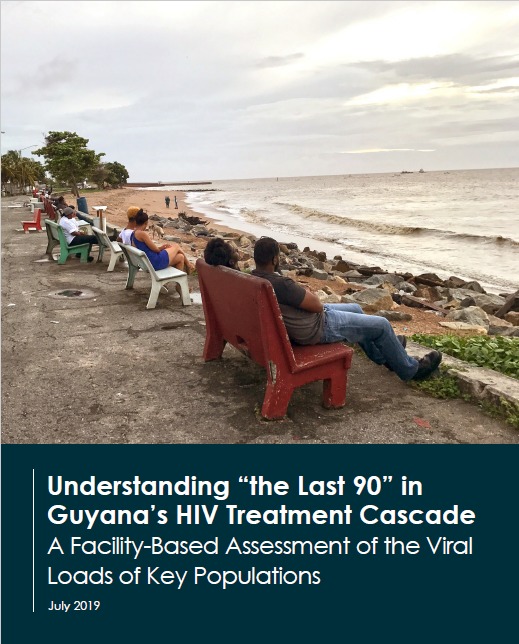
Guyana Completes Key Populations Viral Load AssessmentPartnership with Government and Civil Society
By Dr Nastassia Rambarran and Joel Simpson, SASOD Guyana
SASOD Guyana was the local study partner for the Guyana Key Populations Viral Load Assessment. Funding for this project was provided by the United States President’s Emergency Plan for AIDS Relief (PEPFAR) through the United States Agency for International Development (USAID) and the Global Fund to Fight Tuberculosis, AIDS and Malaria with technical support from MEASURE Evaluation in collaboration with the Ministry of Public Health’s National AIDS Programme Secretariat.
SASOD Guyana’s Public Health Consultant, Dr Nastassia Rambarran, and Managing Director, Joel Simpson led the fieldwork. The study surveyed 1082 Persons Living with HIV (PLHIV) who attended five care and treatment centres in Georgetown and collected blood for viral load (VL) testing in a subset of those surveyed. The enumerators were recruited from the staff of the five sites and were trained by the SASOD Guyana and MEASURE Evaluation research team.
The study showed that PLHIV reported almost no difficulty in accessing health services and that key populations (KPs) face elevated health, social and economic risks. For example, KPs in HIV treatment tended to be younger, more likely to be unemployed, engage in transactional sex and consume alcohol and illegal substances more than non-KP respondents.
In general, some PLHIV on treatment still engage in risky behaviour. It found that 19% of all clients did not use a condom at last vaginal sex, and 24% did not use a condom at last anal sex. This highlights the need for Pre-exposure Prophylaxis (PrEP) among couples who do not have the same HIV status.
Among those who engaged in transactional sex, only 55% had used a condom at the last paid sex. The study also showed that the HIV information system in Guyana has incomplete information on VL testing and results with health facilities not meeting VL testing targets and therefore not being able to provide optimal HIV services to their clients. The data from the study could, however, be used by implementers to fill those gaps at the programmatic level and to estimate the viral suppression in Guyana with more accuracy.
To read the complete study on PANCAP.org click here.
WHAT IS PANCAP?
PANCAP is a Caribbean regional partnership of governments, regional civil society organisations, regional institutions and organisations, bilateral and multilateral agencies and contributing donor partners established on 14 February 2001. PANCAP provides a structured and unified approach to the Caribbean’s response to the HIV epidemic, and coordinates the response through the Caribbean Regional Strategic Framework on HIV and AIDS to maximise efficient use of resources and increase impact, mobilise resources and build the capacity of partners.
What are the Global AIDS Strategy 2021–2026 targets and commitments?
If targets and commitments in the strategy are achieved:
- The number of people who newly acquire HIV will decrease from 1.7 million in 2019 to less than 370 000 by 2025
- The number of people dying from AIDS-related illnesses will decrease from 690 000 in 2019 to less than 250 000 in 2025.
- The goal of eliminating new HIV infections among children will see the number of new HIV infections drop from 150,000 in 2019 to less than 22,000 in 2025.
What are the 95-95-95 Targets for ending AIDS?
- 95% of People Living with HIV know their HIV status;
- 95% of people who know their status on treatment; and
- 95% of people on treatment with suppressed viral loads.
HELPFUL LINKS:
Global AIDS Strategy 2021–2026, End Inequalities, End AIDS
https://pancap.org/pancap-documents/global-aids-strategy-2021-2026-end-inequalities-end-aids/
Caribbean Regional Strategic Framework on HIV and AIDS (CRSF) 2019-2025
https://pancap.org/pancap-documents/caribbean-regional-strategic-framework-2019-2025/
